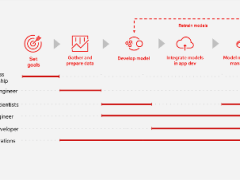By Prenesh Padayachee, Chief Digital & Operations Officer at SEACOM
South Africa's telecommunications landscape is undergoing a transformative shift, driven largely by the exponential growth of its fibre optic infrastructure. According to a recent SA Wholesale Telecoms Report, the local wholesale fixed access market is projected to grow at a robust 9.1% compound annual growth rate (CAGR) by 2027, surpassing even mobile facilities in revenue.
At the same time, South Africa's combined wholesale telecoms market is set to reach a remarkable R52 billion in 2027, growing at a CAGR of 6.1%. These figures underscore the role fibre connectivity will play in shaping the country's digital future.
Fibre connectivity for inclusive economic growth
The growth of fibre optic networks in South Africa is expanding connectivity, but it's also significantly shaping the business landscape across both urban and rural areas. The expansion of fibre-to-the-home (FTTH) services by fibre network operators (FNOs) underscores a significant investment in the technology, which is increasingly seen as a driver for socioeconomic growth. The widespread deployment of fibre has the potential to empower industries that rely on robust, real-time data processing, such as finance, automotive, manufacturing, retail, logistics, healthcare, and aerospace. Fibre's superior speed, reliability, and low latency compared to traditional copper lines like ADSL make it an impactful technology for these data-intensive sectors.
Moreover, fibre optic cables offer higher bandwidth capacities, which is crucial for businesses as they develop and leverage more data-intensive applications. They are less susceptible to interference and eavesdropping than wireless connections, and are a secure data transmission method that further endears them to digital enterprises and innovative business operations.
Despite higher initial installation costs, the long-term benefits of fibre – characterised by its longer lifespan and reduced maintenance costs – present a cost-effective solution for businesses, underpinning the economic argument for its adoption. These attributes not only foster a conducive environment for business operations, but also significantly contribute to the broader socioeconomic advancement of South Africa.
Engine of innovation: Fibre underpins South Africa's digital transformation
While Africa remains the least connected continent globally, significant strides are being made to expand fibre optic infrastructure across the region. South Africa, in particular, exemplifies this trend by actively integrating fibre into its national strategy. As of 2022, fibre connectivity has already become the norm for the majority of connected households in most developed countries, establishing fibre as the dominant broadband technology. This global shift is driven by the increasing demand for high-speed, reliable Internet services that support digital enhancement across various sectors.
South Africa is not merely adopting fibre technology but is adapting it to overcome unique local challenges and drive its own socioeconomic advancement. Upgrades to national and regional fibre backbone infrastructure are keeping pace with global standards and being tailored to meet the expansive needs of the country’s diverse economy, supporting the growth of data-intensive online applications and services such as cloud storage, video streaming, and e-commerce.
Levelling the playing field for SMEs
The strategic expansion of fibre networks from major urban centres to underserved rural areas is pivotal. The expansion democratises access to digital resources and stimulates local economies by supporting small and medium enterprises (SMEs) and attracting new investments. As connectivity barriers are removed, more regions across South Africa can participate in the digital economy, driving inclusive growth and innovation nationwide. We cannot overstate the role of fibre in facilitating vast cross-sector improvements, as local industries depend heavily on reliable Internet service.
Moreover, as South Africa continues to embrace cloud computing and AI, the demand for fibre will only intensify, proving that the backbone of digital transformation in the business sector is indeed high-speed connectivity. The expansion of fibre infrastructure in South Africa is not just a technological upgrade; it is a forward-thinking strategy that catalyses national and economic growth.
Building a connected future for all
High-quality fibre connectivity is essential for businesses, particularly SMEs, to thrive in an increasingly digital marketplace. By investing in robust fibre infrastructure, SMEs can unlock a wealth of opportunities to drive their long-term growth and competitiveness.
Fibre-enabled businesses can leverage enhanced data capabilities to improve operational efficiencies, gain deeper customer insights, and develop innovative products and services. Additionally, access to reliable, high-speed connectivity empowers SMEs to engage with influential technologies like cloud computing and artificial intelligence, levelling the playing field against larger competitors.
To capitalise on these opportunities, SMEs across South Africa should prioritise investing in the best connectivity solutions for their business. This strategic investment helps strengthen the SME's digital capabilities and contributes to the broader socioeconomic benefits of fostering innovation and growth across all industries.
ENDS














